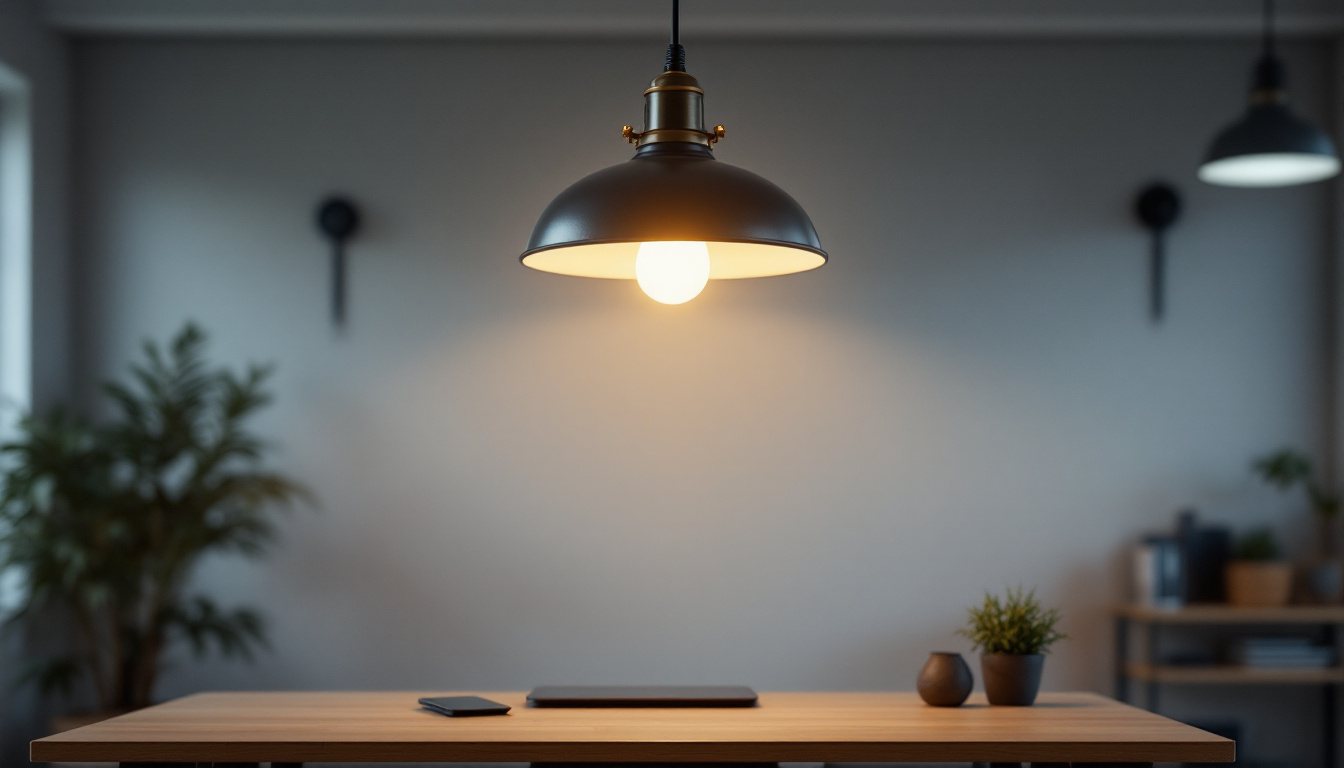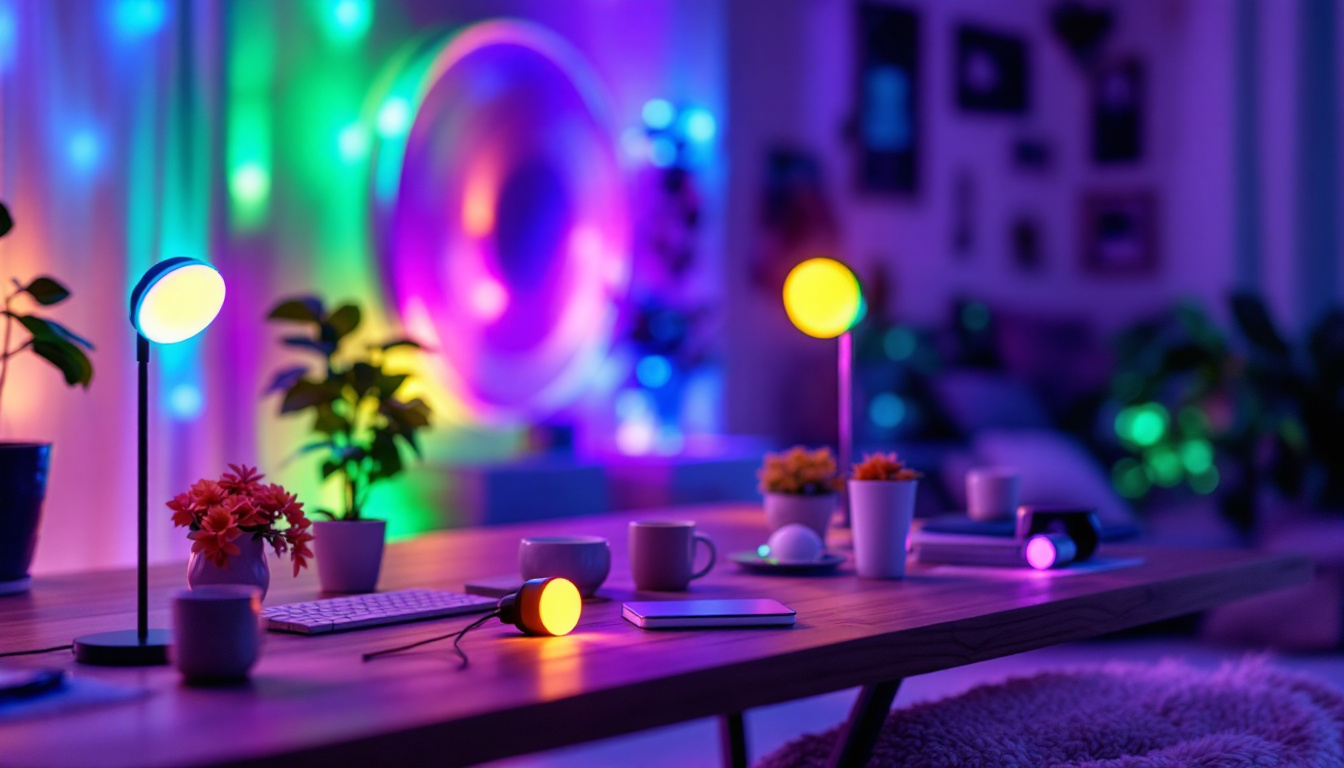
In the ever-evolving world of lighting design, individual hanging lights have emerged as a popular choice among homeowners and businesses alike. Their versatility, aesthetic appeal, and functionality make them an essential element in various spaces. For lighting contractors, understanding the nuances of these fixtures is crucial for delivering exceptional service and meeting client expectations. This article delves into the key insights surrounding individual hanging lights that every lighting contractor should know.
Individual hanging lights, often referred to as pendant lights, are fixtures that hang from the ceiling, typically suspended by a cord, chain, or rod. They come in various styles, sizes, and materials, making them suitable for a range of applications, from residential dining areas to commercial spaces.
There are several types of individual hanging lights, each designed to serve specific purposes and aesthetics. Understanding these types can help contractors recommend the best options to their clients.
The materials used in individual hanging lights can significantly influence their style and functionality. Common materials include glass, metal, wood, and fabric. Each material offers unique characteristics that can complement different interior designs.
For instance, glass pendants can provide a modern and sleek look, while wooden fixtures may evoke a rustic charm. Additionally, the style of the fixture—be it industrial, contemporary, or traditional—should align with the overall decor of the space to ensure a cohesive design.
Beyond the basic materials, the finish of the light fixtures also plays a crucial role in their overall aesthetic. For example, a matte black finish can lend a sophisticated edge to a modern kitchen, while a brushed brass finish can add warmth and elegance to a vintage-inspired dining room. Furthermore, the choice of bulb can also affect the ambiance; warm white bulbs can create a cozy atmosphere, while cooler tones can enhance a more energetic and vibrant space.
Another important consideration is the height at which the lights are hung. Proper placement can dramatically influence both functionality and style. For instance, pendant lights above a kitchen island should be hung at a height that allows for unobstructed views and easy movement, while those over a dining table can be lower to create an intimate dining experience. This thoughtful approach to installation not only enhances the lighting but also contributes to the overall flow and design of the room.
Proper installation of individual hanging lights is critical for both safety and aesthetic appeal. Lighting contractors should be well-versed in the various factors that influence the installation process.
One of the most important considerations when installing hanging lights is the height at which they are suspended. The ideal height can vary depending on the type of fixture and the space in which it is installed. For example, pendant lights above a dining table should typically hang 30 to 36 inches above the surface to provide adequate illumination without obstructing views.
In commercial settings, such as restaurants or retail spaces, the height may vary based on the ambiance desired. Contractors should also consider the arrangement of multiple fixtures to ensure even lighting distribution and visual harmony.
Electrical safety is paramount when installing hanging lights. Contractors must ensure that the electrical wiring is adequate for the fixture’s wattage and that all connections are secure. Additionally, it is essential to adhere to local building codes and regulations, which may dictate specific requirements for hanging light installations.
Using appropriate hardware and ensuring that fixtures are securely anchored to the ceiling is also crucial. This not only prevents accidents but also ensures the longevity of the installation.
Staying updated on the latest design trends is essential for lighting contractors aiming to provide clients with contemporary solutions. Individual hanging lights have seen various trends that reflect changing consumer preferences.
Minimalist designs have gained popularity in recent years. Clients often seek fixtures that offer a clean and uncluttered look, emphasizing simplicity and functionality. This trend aligns with the broader movement towards minimalism in interior design, where less is often more.
Contractors should be prepared to recommend sleek, unobtrusive fixtures that blend seamlessly into the background while still providing necessary illumination. This approach allows other design elements in the space to shine.
Another emerging trend is the use of mixed materials in individual hanging lights. Combining metal with glass, wood, or fabric can create visually striking fixtures that serve as focal points in a room. This trend allows for greater customization and can cater to diverse client tastes.
Contractors should explore options that incorporate various textures and finishes, as these can enhance the overall aesthetic of a space and provide clients with unique lighting solutions.
As awareness of environmental issues continues to grow, energy efficiency and sustainability have become key considerations for both consumers and contractors. Individual hanging lights can play a significant role in achieving energy-efficient lighting solutions.
LED lighting has revolutionized the industry, offering a more sustainable alternative to traditional incandescent bulbs. Contractors should encourage clients to consider LED options for their hanging lights, as they consume significantly less energy and have a longer lifespan.
Additionally, LED fixtures are available in various styles and designs, making it easier for contractors to find suitable options that meet both aesthetic and functional requirements. Highlighting the long-term cost savings associated with LED lighting can also be a persuasive selling point for clients.
In addition to energy-efficient lighting, the use of eco-friendly materials in the construction of hanging lights is gaining traction. Contractors should be aware of manufacturers that prioritize sustainable practices and materials, such as recycled metals or sustainably sourced wood.
Promoting these options not only aligns with the growing demand for environmentally responsible products but also enhances the contractor’s reputation as a forward-thinking professional in the lighting industry.
Effective communication with clients is essential for lighting contractors, especially when it comes to individual hanging lights. Understanding client needs, preferences, and the intended use of the space can lead to more successful installations.
During initial consultations, contractors should take the time to assess the specific needs of their clients. Questions about the desired ambiance, functionality, and style can provide valuable insights that guide the selection process.
Additionally, discussing the practical aspects of lighting—such as the types of activities that will take place in the space—can help determine the appropriate brightness and style of the hanging lights. This tailored approach ensures that clients receive solutions that truly meet their expectations.
Offering customization options can set a contractor apart from competitors. Many manufacturers provide the ability to customize hanging lights in terms of size, color, and finish. By presenting these options to clients, contractors can help them create unique fixtures that reflect their personal style.
Furthermore, custom solutions can address specific spatial constraints or design challenges, making it easier to achieve the desired outcome. This level of service not only enhances client satisfaction but also fosters long-term relationships.
Once individual hanging lights are installed, ongoing maintenance and care are essential to ensure their longevity and performance. Lighting contractors should provide clients with guidance on how to care for their fixtures effectively.
Regular cleaning of hanging lights is crucial to maintaining their appearance and functionality. Contractors should advise clients on the best cleaning methods for different materials, as some may require special care. For example, glass fixtures may need gentle cleaning solutions to avoid scratches, while metal fixtures may require polishing to prevent tarnishing.
Additionally, educating clients about the importance of replacing burnt-out bulbs promptly can help maintain optimal lighting levels and prevent strain on the electrical system.
Encouraging clients to conduct periodic inspections of their hanging lights can help identify potential issues before they become significant problems. Checking for loose connections, frayed cords, or signs of wear can prolong the life of the fixtures and ensure safety.
Contractors can offer maintenance services or reminders to clients, reinforcing their commitment to quality service and customer satisfaction.
Individual hanging lights are a versatile and stylish choice for a variety of spaces, making them an essential consideration for lighting contractors. By understanding the different types, installation considerations, design trends, and maintenance needs, contractors can provide exceptional service that meets and exceeds client expectations.
As the lighting industry continues to evolve, staying informed about energy efficiency, sustainability, and customization options will further enhance a contractor’s ability to deliver tailored solutions. Ultimately, the key to success lies in effective communication and a commitment to understanding the unique needs of each client.
By embracing these insights, lighting contractors can position themselves as trusted experts in the field, ensuring that their clients enjoy the full benefits of individual hanging lights in their spaces.
Ready to elevate your lighting projects with the finest selection of individual hanging lights? Look no further than LumenWholesale, where we provide lighting contractors with spec-grade lighting products at unmatched wholesale prices. Our commitment to quality, affordability, and convenience ensures that you receive the best value for your investment. Say goodbye to middleman markups and hello to hassle-free bulk purchasing with free shipping. Don’t compromise on excellence. Visit LumenWholesale today and discover the perfect lighting solutions for your clients’ needs.

Explore how dusk until dawn lights revolutionize energy efficiency by automatically adjusting to natural light conditions.

Discover the essential role of industrial hanging lights in modern lighting projects.

Discover the comprehensive guide to big solar lanterns tailored for lighting contractors.

Discover the vibrant world of LED RGB lights and their role in energy-efficient lighting solutions.